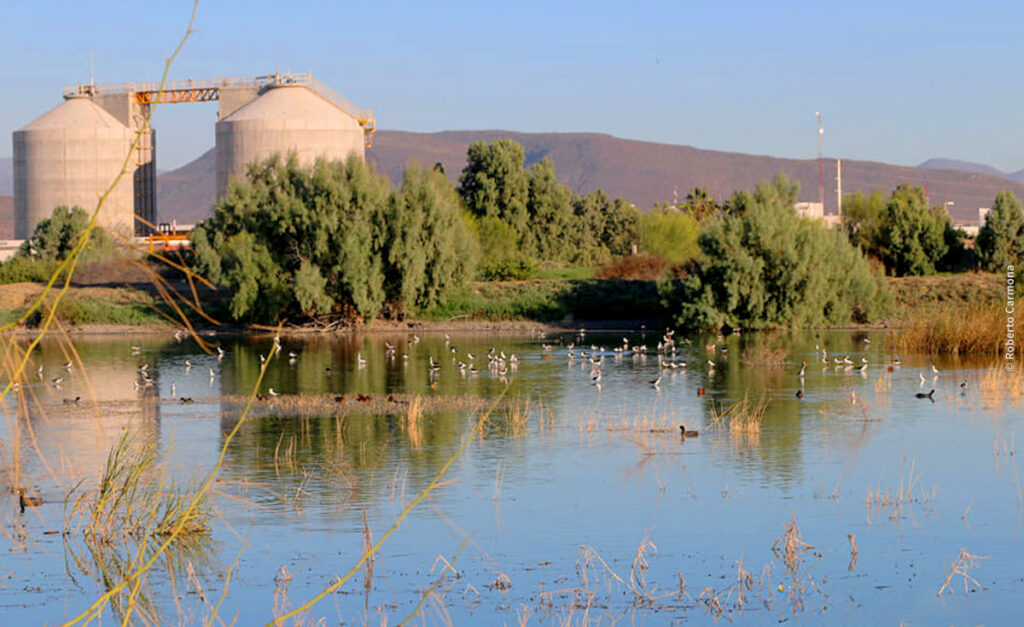Every day, more than 250,000 inhabitants make La Paz one of the most vibrant cities on the Baja California peninsula. They wake up with the Bay of La Paz in front of them. The city was founded on an arid territory, but its surroundings hide impressive flora and fauna refuges, some natural and many others recovered, thanks to the efforts of many people concerned about maintaining these spaces for native fauna and free access to the community.
The Municipal Youth Ecopark and its artificial wetland stand out in the urban map, a space of biological and cultural importance immersed in the capital of Baja California Sur. Founded in 2020, the wetland, which formerly functioned as oxidation ponds, has become a space that receives a significant number of resident and migratory birds, in addition to other species, which in turn has served as a bridge of encounter of the La Paz community with its natural environment. The official designation meant, literally, a second chance for this space that suffered from a notorious desiccation, since it is fed by treated water from the neighboring plant, which decreased drastically, prior to the designation.
Made up of four lagoons, this artificial wetland serves as habitat for more than 230 bird species, which represents 50% of those registered in Baja California Sur. Roberto Carmona, Victor Ayala and the team of the Bird Laboratory of the Autonomous University of Baja California Sur (UABCS) have been in charge of an important part of this monitoring and scientific record. During the monitoring, for example, 10 individuals of the Belding’s Yellowthroat (Geothlypis beldingi), a species classified as “Vulnerable” by the International Union for Conservation of Nature (IUCN), have been detected, in danger of extinction by the Mexican Government (NOM-059) and currently under the guardianship of Pronatura Noroeste, in addition to the registration of 10 breeding pairs of the lesser grebe (Tachybaptus dominicus), a species under special protection in NOM-059, to name a few of the species of conservation concern.

Pronatura Noroeste has been actively involved, together with the UABCS Bird Laboratory, the CIPACTLI Forest Restoration Agency, the Wastewater Treatment Plant (PTAR) and the Coastal Solutions Program, in an effort to strengthen the site’s conservation status. Concrete actions such as the installation of signage aimed at visitors to the Ecopark, the publication of the first guide to the site’s common birds, and the first Shorebird Festival, which was attended by more than 500 people, have fostered a reunion between the community and nature at the site.
“This Ecopark with its lagoons is the only one of its kind in La Paz. The artificial wetland serves as a refuge for many species of birds and, mainly, as an example of what we can achieve with a little bit of water committed to conservation. In addition to the birds, the community has returned, using the park as a space for recreation, meeting and learning”, commented Sergio González, Baja California coordinator for Pronatura Noroeste.
The conservation effort has paid off. Based on the monitoring history of the lagoons, there has been a substantial increase in the abundance and richness of birds, from 4,000 individuals of 37 species in the 2019-2020 period, to almost 12,000 individuals of 57 species in the 2023-2024 period. The figures corroborate that we are on the right track towards the recovery of this space that has become a bird sanctuary.
Reaching new conservation goals in the lagoons of the Municipal Youth Ecopark requires everyone’s support. If you are from La Paz or just like to support everything that has to do with conservation, click here and contribute to keep this project going.












